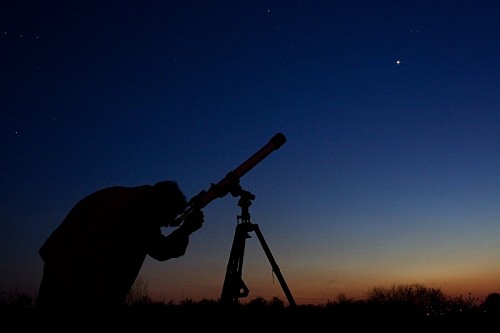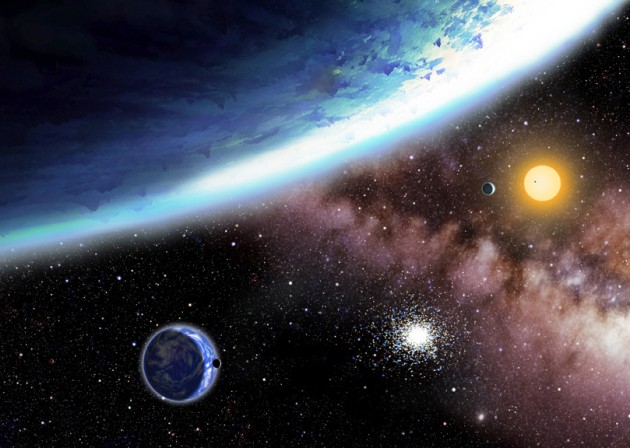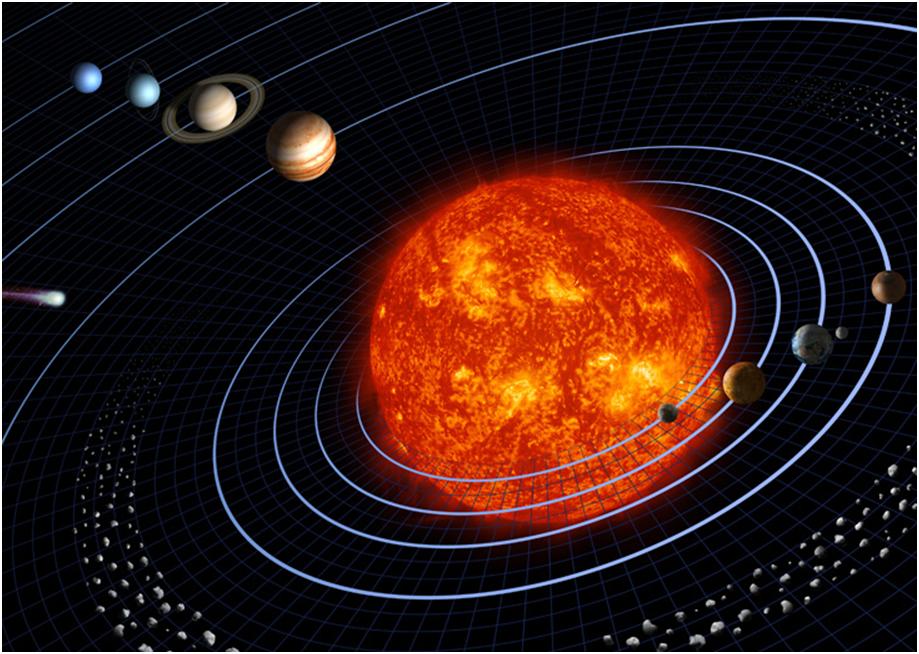Souvenir Sheet: 500th Birthday of Nicolaus Copernicus (1973)(II) Block A (Cambodia 1974)
500th Birthday of Nicolaus Copernicus (1973)(II) Block A (Cambodia 1974)
10 September (Cambodia ) within release 500th birthday of Nicolaus Copernikus goes into circulation Souvenir Sheet 500th Birthday of Nicolaus Copernicus (1973)(II) Block A face value 1,200 Cambodian riel
| Souvenir Sheet 500th Birthday of Nicolaus Copernicus (1973)(II) Block A in catalogues | |
|---|---|
| Michel: | Mi: KH BL50A |
Souvenir Sheet is horizontal format.
Block with the Nicolaus Copernicus portrait and the stamp Mi KH399A (perforated) with gold coloured foilAlso in the issue 500th birthday of Nicolaus Copernikus:
- Stamp - Vaisseau Nerva face value 1;
- Stamp - Nicolaus Copernicus - Mariner II face value 5;
- Stamp - Nicolaus Copernikus-Apollo face value 10;
- Stamp - Alunnisage face value None;
- Stamp - Nicolaus Copernikus and lander face value 150;
- Stamp - Nicolaus Copernikus and Skylab III face value 200;
- Stamp - Concorde face value 250;
- Souvenir Sheet - 500th Birthday of Nicolaus Copernicus (1973)(II) Block A face value 1,200;
- Stamp - 500th Birthday of Nicolaus Copernicus (1973)(II) face value 1,200;
- Stamp - Sortie dans l'espace face value 50;
- Stamp - Copernicus, Sun face value 1,200;
- Souvenir Sheet - Copernicus, Sun face value 1,200;
- Stamp - Copernicus, Sun face value 1,200;
Souvenir Sheet 500th Birthday of Nicolaus Copernicus (1973)(II) Block A it reflects the thematic directions:
An anniversary is the date on which an event took place or an institution was founded in a previous year, and may also refer to the commemoration or celebration of that event. For example, the first event is the initial occurrence or, if planned, the inaugural of the event. One year later would be the first anniversary of that event. The word was first used for Catholic feasts to commemorate saints. Most countries celebrate national anniversaries, typically called national days. These could be the date of independence of the nation or the adoption of a new constitution or form of government. The important dates in a sitting monarch's reign may also be commemorated, an event often referred to as a "Jubilee".
An astronomer is a scientist in the field of astronomy who focuses their studies on a specific question or field outside the scope of Earth. They observe astronomical objects such as stars, planets, moons, comets and galaxies – in either observational (by analyzing the data) or theoretical astronomy. Examples of topics or fields astronomers study include planetary science, solar astronomy, the origin or evolution of stars, or the formation of galaxies. A related but distinct subject is physical cosmology, which studies the Universe as a whole
Astronomy is a natural science that studies celestial objects and the phenomena that occur in the cosmos. It uses mathematics, physics, and chemistry in order to explain their origin and their overall evolution. Objects of interest include planets, moons, stars, nebulae, galaxies, meteoroids, asteroids, and comets. Relevant phenomena include supernova explosions, gamma ray bursts, quasars, blazars, pulsars, and cosmic microwave background radiation. More generally, astronomy studies everything that originates beyond Earth's atmosphere. Cosmology is a branch of astronomy that studies the universe as a whole. .
Celestial bodies or heavenly bodies are objects in space such as the sun, moon, planets, and stars. They form a part of the vast universe we live in and are usually very far from us.
A hand is a prehensile, multi-fingered organ located at the end of the forearm or forelimb of primates such as humans, chimpanzees, monkeys, and lemurs. A few other vertebrates such as the koala (which has two opposable thumbs on each "hand" and fingerprints remarkably similar to human fingerprints) are often described as having "hands" instead of paws on their front limbs. The raccoon is usually described as having "hands" though opposable thumbs are lacking.
The Moon is Earth's only natural satellite. It orbits at an average distance of 384,400 km (238,900 mi), about 30 times the diameter of Earth. Tidal forces between Earth and the Moon have over time synchronized the Moon's orbital period (lunar month) with its rotation period (lunar day) at 29.5 Earth days, causing the same side of the Moon to always face Earth. The Moon's gravitational pull – and to a lesser extent, the Sun's – are the main drivers of Earth's tides.
A spacecraft is a vehicle that is designed to fly and operate in outer space. Spacecraft are used for a variety of purposes, including communications, Earth observation, meteorology, navigation, space colonization, planetary exploration, and transportation of humans and cargo. All spacecraft except single-stage-to-orbit vehicles cannot get into space on their own, and require a launch vehicle (carrier rocket).
The Sun, also known as Sol, is a star at the center of the solar system. It is a white star that gives off different types of energy such as infrared energy (heat), ultraviolet light, radio waves and light. It also gives off a stream of particles, which reaches Earth as "solar wind". The source of all this energy is nuclear fusion. Nuclear fusion is the reaction in the star which turns hydrogen into helium and makes huge amounts of energy. It is a nearly perfect ball of hot plasma.








